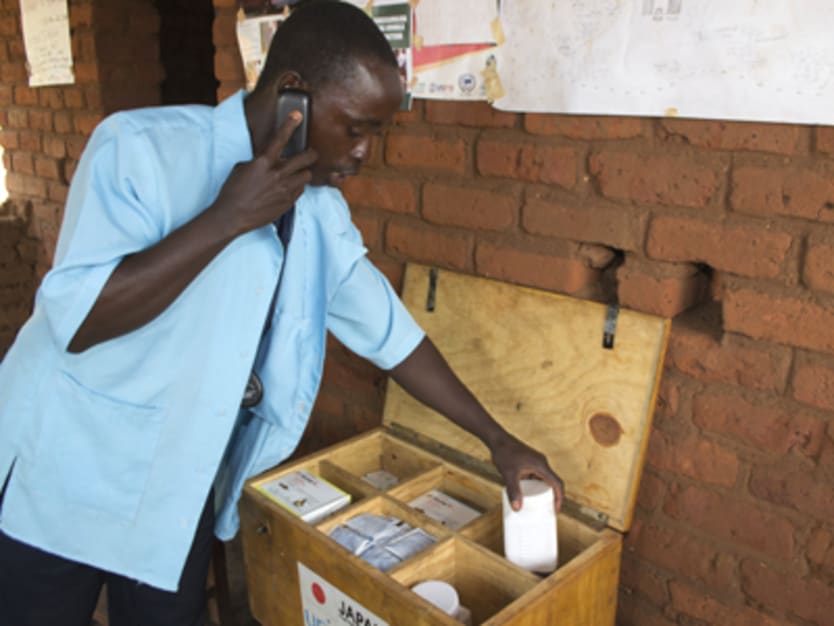
Each year, millions of children die before the age of 5, largely from preventable causes. With that staggering number, the task of saving these children’s lives is a daunting challenge.
That said, the solution may not be as complicated as you’d think.
Several aid organizations are coming up with simple, low-cost solutions to reduce under-5 mortality. In Malawi, a U.S.-based development implementer is now working to transition to the government its grant award-winning project that uses mobile phones to help boost the availability of health products locally, a factor seen as critical to help children especially in hard-to-reach areas survive and thrive.
JSI has been testing what it calls an enhanced management approach to improving health supply chain in Malawi. This involves twin solutions: cStock, an open-source information management system to calculate resupply as well as manage and monitor community-level health products, and the formation of District Product Availability Teams, which use data from cStock to solve problems and make timely decisions on health logistics issues.
Prior to the launch of the project in 2010, only 27 percent of community health workers called health surveillance assistants had all needed products to treat pneumonia, malaria, diarrhea and malnutrition in stock on the day of their visit to hard-to-reach areas, and fewer than half (43 percent) of these workers submit reports with logistics data to health facilities. By 2013, the numbers roughly doubled — 62 percent of the health surveillance assistants had the needed drugs on the day of visit and more than 80 percent are reporting logistics data to cStock every month.
“MHealth systems do not need to be complex to dramatically improve supply chain data visibility,” Yasmin Chandani, project director for JSI’s Supply Chains for Community Case Management project, told Devex. “The thoughtful and deliberate decisions in the design and implementation process for cStock were key to its successful and rapid uptake and to ensuring affordable and sustainable scale-up.”
CStock creates reports from monthly data on stock levels transmitted by health surveillance assistants from their mobile phones to a toll-free short code and triggers reorders to supervisors at health centers. It also features a Web-based dashboard that managers at district levels and above can access to monitor the supply chain performance.
The approach has won the endorsement from the Ministry of Health, which, along with its partners, has committed to roll it out in all of the country’s 29 districts. With such a commitment, funding to scale up the project is no longer a problem, according to Chandani.
The main concern, she added, is ensuring that the approach becomes institutionalized. That means making the approach a core business practice at the Ministry of Health.
As such, JSI has crafted a five-year plan that covers what would be needed to sustain cStock and the required capacity building investments to address institutional gaps at MOH so they can manage the system by the end of this transition period. It entails hiring a project manager — which is also funded by the IWG grant — and a project management team. The project manager will serve for 18 months and is expected to hand over the role to the person designated by MOH during that timeframe.
“The most immediate next step is to present the five-year transition plan to the [MOH-chaired transition plan] taskforce for input, buy-in, and funding commitments,” Chandani said.
What do you think is an innovative idea? Let us know by leaving a comment below, and read our previous #innov8aid.
